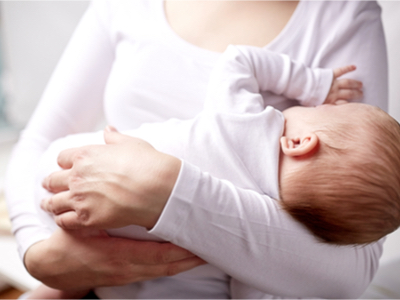Article by Eliza Cochrane of Dpack, a direct packaging and packaging solutions.
 In October 2019 the University of Bristol published its findings from a study of over 3,500 new parents that made for sobering reading.
In October 2019 the University of Bristol published its findings from a study of over 3,500 new parents that made for sobering reading.
It concluded that even three years on from giving birth, fewer than 30 per cent of new mothers were working either in full-time jobs or as self-employed. This figure stood next to the 90 per cent figure for men who were largely carrying on business as usual.
Now, it may be that part of the gender-disparity is down to personal choice. But the gap is much too large to personal choice to be the sole accounting factor. In reality, it is the UK’s current approach to parental leave that is causing the divide. A legacy of the Conservative-Liberal Democrat coalition government, that strongly encourages the woman to be the primary caregiver of their new-borns by default.
‘Shared Parental Leave’ & Why It Discriminates Against Women
Shared Parental Leave and Statutory Shared Parental Pay, two pieces of legislation signed into law in 2015, were drafted with the best intentions: to give new mothers more freedom to share their maternity leave with the child’s father. But there were big flaws in both.
The first is that both did not include new mothers who happened to be freelancers or self-employed contractors. Immediately, this alienated around 1.6 million women currently working self-employed in the UK.
The second big flaw is that there is no legal requirement for businesses to pay men the same as women when it comes to parental leave. This is a curious parental gender-pay gap that actually favours women in this area, but exacerbates the wider societal gender-pay gap at large. This is down to the fact that employed fathers who decide to take shared parental leave are either paid 90 per cent of their earnings or a statutory rate of approximately £148 for 39 weeks. The lowest amount is what they are paid. Expecting mothers, on the other hand, are paid with what is known as “enhanced pay”.
Perhaps unsurprisingly, most businesses do not try to match new fathers’ statutory or weekly pay with the enhanced pay received by the new mothers. At least that is what one study by the Working Families Charity found — that only 32 per cent of businesses attempted to match Shared Parental Leave payments.
This reluctance to price match might also be down to the wider cultural gender-pay gap at large. It is estimated that around eight out of 10 British companies pay their male workers more than their female workers, on average. So enhancing new fathers’ pay would essentially cost them more unnecessary money, it would seem.
Ending the discrimination of Shared Parental Leave
One woman, music engineer Olga Fitzroy, was so incensed by the inequality of being “taken back to the 1950s” that she decided to set up the Parental Pay Equality (PPE) campaign. All the signs point to the PPE being successful so far; the government have even pledged to review its current policies in light of the PPE’s campaigning.
In the meantime, however, the PPE continues to discover disturbing trends that negatively impact on women in the world of work. For example, a recent study found only 20 per cent of women still had the same earning power two years after childbirth as they had prior to it. Largely because self-employment has the additional stresses of not having guaranteed work after maternity leave, and because self-employment requires considerable energy to be spent on networking and fostering relationships with clients.
But there is another disturbing truth that still manifests throughout businesses: that career breaks are still viewed unfavourably by hiring managers, even when the purpose of the break is to give birth to a child. A lot of hirers — and particularly amongst hirers in the STEM fields — worry that career breaks can render job skills out of date. This belief can even discriminate woman who have done nothing wrong except be of child-bearing age when it comes to the job application process.
One clear way to help women overcome these disadvantages would be to implement fair parental leave payment legislation. If it was possible for men to share all the equal advantages for taking the time to look after the children, then the motherhood penalty would no longer be solely placed on the mothers. Hiring managers would no longer be able to easily discriminate.
The Benefits of Equal Parental Leave Policies
Where more equal policies have been implemented, companies have reported better staff satisfaction and retention. For example, Airbus Commercial began offering male workers up to 23 weeks’ enhanced pay that matched their full average payments. It also reduced the number of hours for new parents returning from leave to help them readjust to life at work. This led to a doubling in the number of men taking parental leave. This is doubly important because the more men take parental leave, the less of a stigma it becomes.
The important challenges we have on the road ahead to abolishing the motherhood penalty and the wider gender-pay gap is to help to reduce the stigmas that are currently in place. Men need to know that it is OK for them to take parental leave, and that doing so will not negatively impact on their career.
Of course not every new mother will want to share their maternity leave with the child’s father, and there is nothing wrong with that decision as long as it wasn’t a forced decision. But we should all fight — as Fitzroy has done — for equality when it comes to parenting legislation, and to help end the destigamtization that is currently part of the barrier to change.








